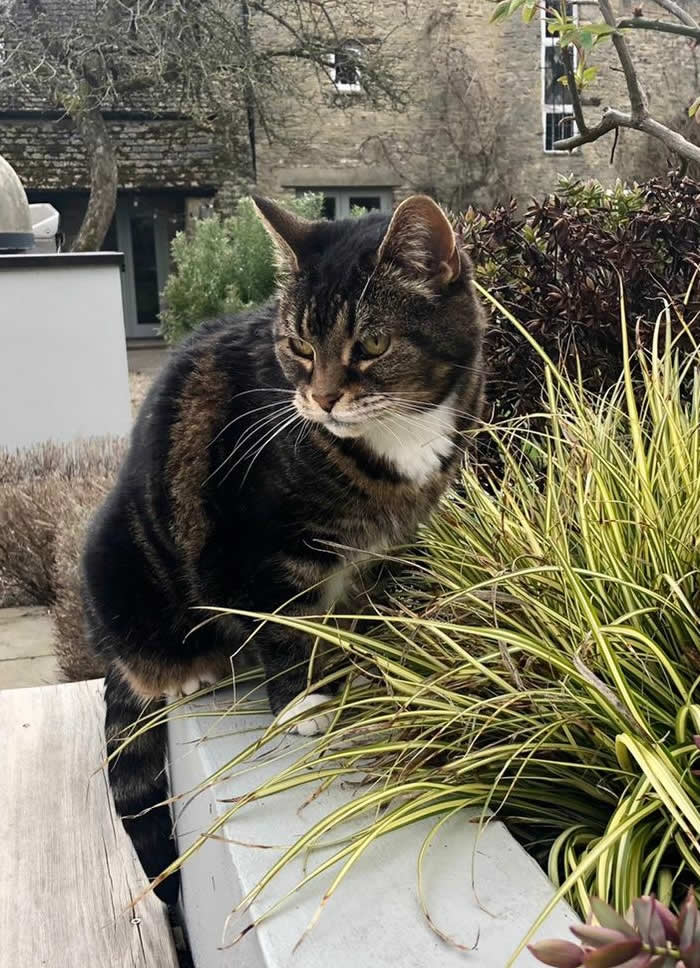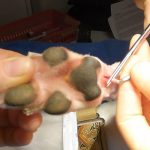We feed the two cats up high to avoid harassment from the dog. In the last year the cats must be lifted up to their meals as they can’t make the jump any longer.
Recently Sophie was asking to go out frequently, then she produced some little puddles of urine with blood clots. This is a sure sign of an inflamed bladder – cystitis.
When the bladder is inflamed it can bleed and the irritation causes a frequent desire to urinate. It is surprisingly common in cats and often, they will urinate in odd places as a result – the shower tray or bath is a common location.
In young cats, cystitis is commonly purely an inflammatory condition.
In older cats, there is an increased chance of cystitis being due to an underlying infection. There is also the risk that bladder tumours or bladder stones may be present also, which creates a worrying scenario.
Sophie has thankfully responded well to antibiotics, so we hope this will be a straightforward case. However, if the problem recurs, then some investigation will be required.
Investigation of urinary disease is usually straightforward and would include a urine test with a bacterial culture to check for infection. Sedation or general anaesthesia is required to do a thorough ultrasound scan of the bladder and kidneys and this may detect things like bladder stones and bladder tumours.
Sometimes x-rays are also done though the improvements in ultrasound mean that this is less common than it was 20 years ago. On occasion, older cats can develop a “deep seated” bladder infection which can take a month or even more of antibiotics to resolve.
So, at this stage it’s fingers crossed that dear old Sophie responds well to the tablets and we can clear her problem first time.
We know there’s no guarantee of this, so we will see what happens over the next few weeks and hope that we won’t see a recurrence of her urinary discomfort.
Enjoy your pets
Jason Williams
Bicester Vets







